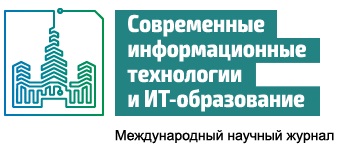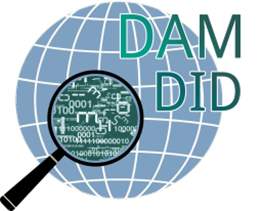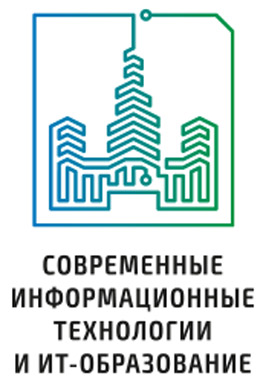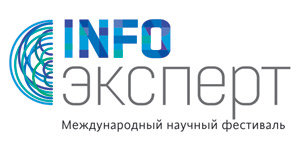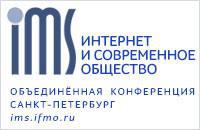ВОЗМОЖНОСТЬ ИСПОЛЬЗОВАНИЯ МЕТОДОВ ПОЧТИ – ПЕРИОДИЧЕСКИХ ФУНКЦИЙ, ВЕЙВЛЕТ АНАЛИЗА И ТЕОРИИ САМОПОДОБИЯ ХЁРСТА ДЛЯ ПРОГНОЗИРОВАНИЯ НОВОСТНЫХ СОБЫТИЙ В ИНФОРМАЦИОННОМ ПРОСТРАНСТВЕ
Аннотация
В представленной работе рассматривается возможность применения методов почти – периодических функций, вейвлет анализа и теории самоподобия Хёрста для анализа спектров поведения с течением времени векторов, задающих положение кластеров новостных сообщений в информационном пространстве. Суть предлагаемого авторами подхода заключается в применении методов математической лингвистики (разметка текста, нормализация, комментирование) для создания словаря и коллекции новостных текстовых сообщений, привязанных к шкале времени. Это позволяет, используя стандартные методы, создать для каждой новости её векторное представление. Для всей совокупности векторов в представленной статье предлагается ввести понятие директора (условной оси, характеризующей основное направление всех векторов). Изменение с течением времени метрики (косинус угла) векторов, задающих положение центров кластеров относительно директора, образуют спектры информационных процессов. Анализ которых с помощью методов почти – периодических функций, вейвлет анализа и теории самоподобия Хёрста может позволить выявить наличие повторяемости некоторых групп социальных событий, и тем самым прогнозировать их возможное проявление в будущем.
Литература
2. Ju J.Y, Zhu R.X., Geng, L. Forecasting and analysis the demand of agricultural mechanization for economic development Advanced Materials Research. Volume 694 697, Pages 3512-3515, 4th International Conference on Manufacturing Science and Engineering, ICMSE 2013; Dalian; China; 30 March 2013 through 31 March 2013; Code 97229, (2013).
3. Petrov A.A., Pospelov I.G. Mathematical models of the economy of Russia // Herald of the RAS, T.79, number 6, - pp 492-506, (2009).
4. Aleskerov F.T. Indexes of influence considering preferences of the participants to build coalitions Reports RAN.- t 414, № 5. -. P. 594-597, (2007).
5. Huo D. Cluster analysis of market potential in emerging markets: A dynamic research based on Markov chain. Romanian Journal of Economic Forecasting, Volume 16, Issue 4, Pages 218-231, (2013).
6. Albulescu C.T. Forecasting the Romanian financial system stability using a stochastic simulation model. Romanian Journal of Economic Forecasting, Volume 13, Issue 1, Pages 81-98, (2010).
7. Akaev A.A., Sadovnichy V.B., Korotayev A.C. On the dynamics of the world demographic transition and financial-economic crises forecasts., European Physical Journal: Special Topics, Volume 205, Issue 1, Pages 355-373, (2012).
8. Yingyuan Xiao, Pengqiang Ai, Ching-hsien Hsu, Hongya Wang, Xu Jiao. Time-ordered Collaborative Filtering for News Recommendation. // China Communication. – Vol. 12, № 12. – P. 53-62.
9. Daqiang Zhang, Ching-Hsien Hsu, Min Chen, Quan Chen, Naixue Xiong, Jaime Lloret. Cold-Start Recommendation Using Bi-Clustering and Fusion for Large-Scale Social Recommender Systems. // IEEE Transactions on Emerging Topics in Computing.– Vol. 2, № 2. – P.239-250, (2014).
10. Allodi, L., Chiodi, L., Cremonini, M. Modifying trust dynamics through cooperation and defection in evolving social networks. Lecture Notes in Computer Science (including subseries Lecture Notes in Artificial Intelligence and Lecture Notes in Bioinformatics), (2011).
11. Hay, J., Flynn, D. How external environment and internal structure change the behavior of discrete systems. Complex Systems., 25 (1), pp. 39-49, (2016).
12. Hay, J., Flynn, D. The effect of network structure on individual behavior. Complex Systems., 23 (4), pp. 295-311, (2014).
13. Bagnoli, F., Rechtman, R. Topological bifurcations in a model society of reasonable contrarians. Physical Review E - Statistical, Nonlinear, and Soft Matter Physics, 88(6), 062914, (2013).
14. Asela Gunawardana, Christopher Meek, Puyang Xu. A Model for Temporal Dependencies in Event Streams. / Microsoft Research, – P. 1-8, (2011).
15. Zhukov D.O., Lesko S.A. Trends, self-similarity and forecasting of news events in the information domain, its structure and director. // 2015 IEEE International Conference on Smart City/SocialCom/SustainCom together with DataCom 2015 and SC2 2015, December 19-21, Chengdu, Sichuan, China, P. 870-873, 978-1-5090-1893-2/15, DOI 10.1109/SmartCity.2015.178, (2015).
16. Feldman R., Sanger J. The Text Mining Handbok. Cambridge: Cambridge University Press, (2007).
17. Turney, P. D. The latent relation mapping engine: Algorithm and experiments. // Journal of Artificial Intelligence Research, 33, pp. 615–655, (2008).
18. Costa G., Mango G., and Ortale R. An incremental clustering scheme for data de-duplication // Data Mining and Knowledge Discoverym, Vol. 20. No. 1. pp. 152-187, (2010).
19. Levitan B.M. Almost periodic functions, M., (1953).
20. Grossman A., Morlet J. Decomposition of Hardy functions into square integrable wavelets of constant shape // SIAM J. Math. 1984. Vol. 15, No. 4, P. 723-736.
21. Tsybakov B.S. Teletraffic model based on self-similar random process. Moscow, - 31 (1999).
22. Anvari M.A., Aghamohammadi C.A, Dashti-Naserabadi H.A., Salehi E.A., Behjat E.A., Qorbani M.A., Khazaei Nezhad M.A., Zirak M.A., Hadjihosseini A.B., Peinke J.B., Tabar M.R.R. Stochastic nature of series of waiting times. Physical Review E - Statistical, Nonlinear, and Soft Matter Physics, Volume 87, Issue 6, Article number 062139, (2013).
23. Walter Willinger, Murad S. Taqqu, Robert Sherman and Daniel V. Wilson, “Self-Similarity Through High-Variability: Statistical Analysis of Ethernet LAN Traffic at the Source Level”. IEEE/ACM Transactions on Networking, Vol. 5, No. 1, (1997).

Это произведение доступно по лицензии Creative Commons «Attribution» («Атрибуция») 4.0 Всемирная.
Редакционная политика журнала основывается на традиционных этических принципах российской научной периодики и строится с учетом этических норм работы редакторов и издателей, закрепленных в Кодексе поведения и руководящих принципах наилучшей практики для редактора журнала (Code of Conduct and Best Practice Guidelines for Journal Editors) и Кодексе поведения для издателя журнала (Code of Conduct for Journal Publishers), разработанных Комитетом по публикационной этике - Committee on Publication Ethics (COPE). В процессе издательской деятельности редколлегия журнала руководствуется международными правилами охраны авторского права, нормами действующего законодательства РФ, международными издательскими стандартами и обязательной ссылке на первоисточник.
Журнал позволяет авторам сохранять авторское право без ограничений. Журнал позволяет авторам сохранить права на публикацию без ограничений.
Издательская политика в области авторского права и архивирования определяются «зеленым цветом» в базе данных SHERPA/RoMEO.
Все статьи распространяются на условиях лицензии Creative Commons «Attribution» («Атрибуция») 4.0 Всемирная, которая позволяет другим использовать, распространять, дополнять эту работу с обязательной ссылкой на оригинальную работу и публикацию в этом журналe.
